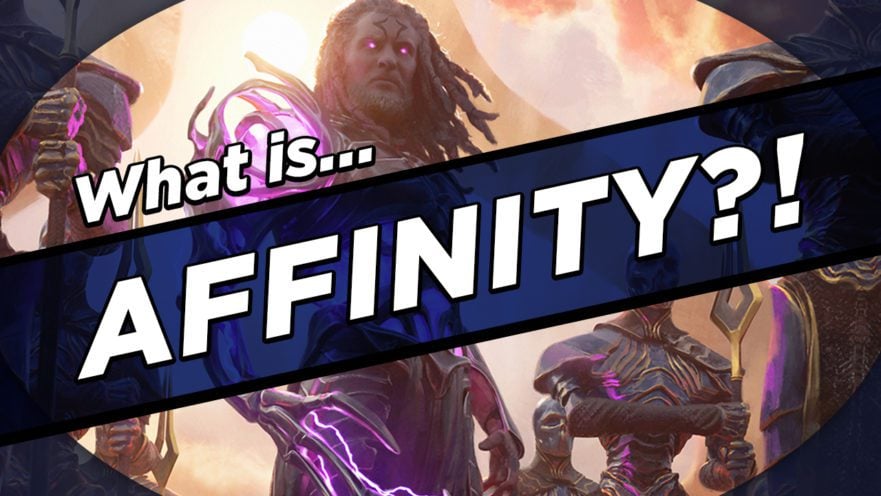Affinity is one of the most powerful mechanics ever printed in Magic, and it’s the namesake of one of the Modern format’s longest-standing decks. But how exactly does it work? Read on to learn more!
What is Affinity?
Affinity first appeared in the artifact-focused Mirrodin block, and its goal was to make your artifacts easier to cast. A card with affinity for artifacts costs one generic mana less to cast for each artifact you control as you cast it. Affinity doesn’t just apply to artifacts — there was a cycle of Golems in Darksteel that had affinity for certain land types, and a card called Junk Winder in Modern Horizons 2 has affinity for tokens — but artifact affinity is the most common type you’ll find.
So, what makes affinity so powerful? Cost-reduction mechanics are inherently strong, and affinity might be the best cost-reduction mechanic in Magic. Affinity for artifacts specifically has proven to be powerful due to the prevalence of low-cost artifacts, the sheer number of artifacts you can choose from, and the relative difficulty of removing artifacts in play. When your lands are also artifacts, they count toward your card’s affinity, effectively doubling your resources.
Original Affinity decks circa Darksteel used artifact lands to power out spells like Frogmite at a fraction of their mana cost. These decks could win quickly by sacrificing all their artifacts to Arcbound Ravager and draining their opponents’ life totals with Disciple of the Vault. Since then, the term “Affinity” has practically become synonymous with “artifact aggro” in Magic; even when decks move away from the original Affinity cards and synergies, the name continues to stick.
A few more rules to keep in mind regarding affinity:
- You can’t gain mana from affinity; you can only reduce the cost of a spell as low as zero.
- Affinity also only reduces generic mana costs. If a spell with affinity has a colored mana symbol in its casting cost, you’ll still have to pay that mana.
- Affinity doesn’t change the total mana value of spell.
- Affinity’s cost reduction is locked once you cast a spell. If you sacrifice artifacts so pay for the cost once the spell is on the stack, that artifact would still count toward the spell’s affinity.
Want to add some spells with affinity to your decks? Browse all of them here!

